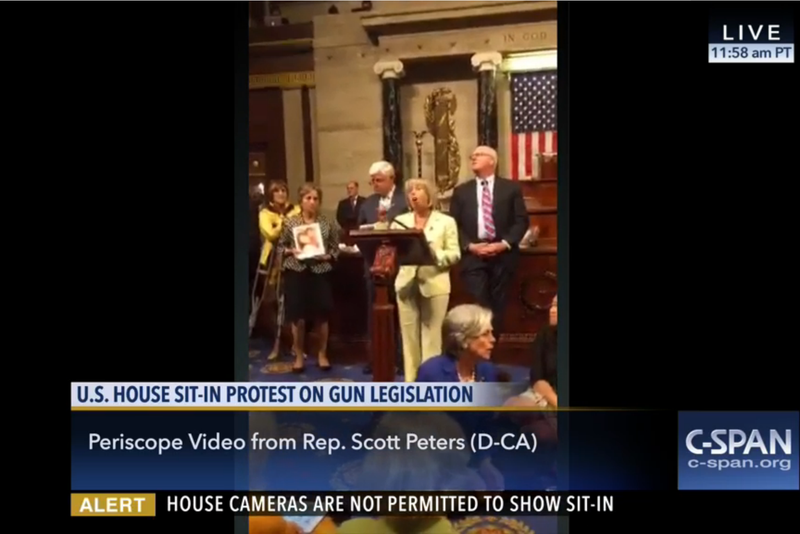New bill seeks independent TV cameras in Congress

In the year 2016, the American people generally expect that they should be able to monitor what’s occurring in the House of Representatives or Senate, whether those events happen before or after a gavel strikes wood. That expectation rises when that action is of public interest. Those expectations foundered on the rocks of the House Rules this June, however, which stipulate that the cameras that provide the public with access to the floor shall be turned off when the House is not in session.
During the sit-in by Democratic lawmakers, we wrote a post about the problems with allowing the majority political party to control access to the cameras instead of a nonpartisan, independent body. Given the importance of informing a huge, widely distributed public, the American public’s access to a live video stream showing what is happening in the chambers should never be a political football.
Unfortunately, that’s exactly what has happened this summer. As our Senior Staff Writer Melissa Yeager noted on the blog, even though shutting off the cameras when the gavel came down wasn’t unprecedented or C-SPAN’s decision, it was a troubling decision for transparency.
Americans may have wanted to know the entirety of people participating in the event and what exactly was happening outside of the area where the sit in was happening. In such situations, we rely on journalists to fight for the public’s right to know by documenting and reporting what’s happening — but we can do better.
Generally, we’re supportive of efforts that provide more access to what’s happening in Congress for the vast majority of the American public who cannot travel to D.C. to witness debates, votes and hearings in person. The best way forward to achieve that goal is to improve the institutional capacity of the Congress to publish the law and the deliberations about it online, as open legislative data and accessible video. We have supported letting our Congress tweet, Facebook and use the next generation of participatory platforms to connect with constituents. In 2016, we also support letting our Congress livestream.
The problem is that congressional livestreaming is a patch on democracy, not a fix. Streams on Facebook and Periscope not only gave the public a new window into the House, but fell far short of what Congress should itself be providing.
Providing public access to the floor of the House is precisely the decision that the speaker can’t be in charge of determining when the activity is not official. Given that both major political parties have recently engaged in unofficial floor protests, only to have the other party’s leader try to restrict access, we’re now left with two options: restrict access or grant it through a rule.
Congressman Ami Bera, D-Calif., introduced a bill to address the issue of camera access in the House that offers a legislative vehicle that would improve the status quo. Here’s the text of the bill:
Amending the Rules of the House of Representatives to allow independent, non-government television cameras to broadcast House floor proceedings.
Resolved, That clause 2(b) of rule V of the Rules of the House of Representatives is amended by inserting before the period at the end thereof the following: “and shall be permitted to record and broadcast at any time a Member is present on the floor.”
This is an appropriate institutional response to last month’s events.
There should be multiple pool cameras on the floor of the House and Senate that are controlled by an independent body that provide a live feed of all action by members of Congress to C-SPAN viewers as well as visitors of House.gov and Senate.gov. In the 21st century, as we have said many times, public means online.

